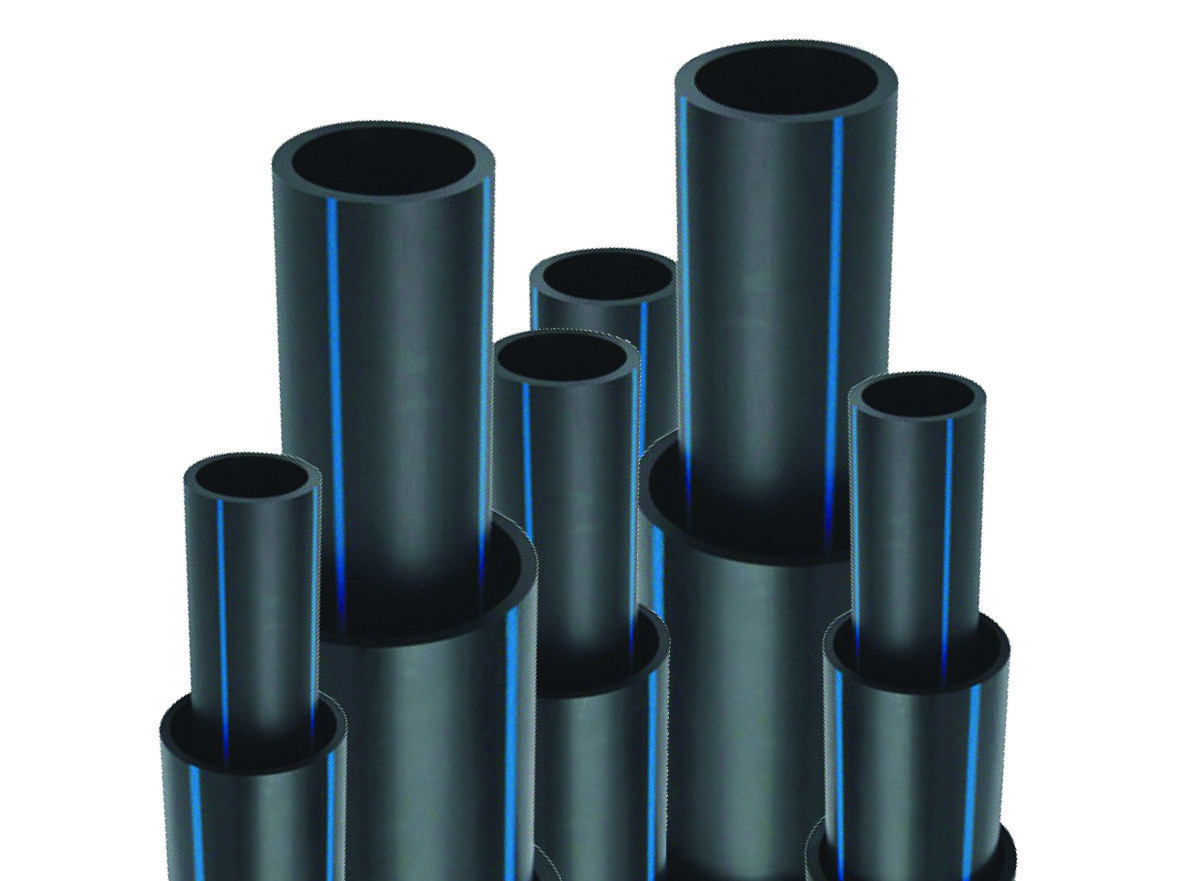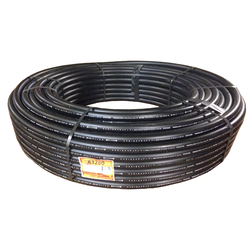American Plastics LLC HDPE Pipe Supplier: Tips for Ensuring Compliance and Longevity
Wiki Article
Discover the most effective Alternatives for Your Next Project With Quality Pipeline Supplies
Selecting the best pipeline products is necessary for any type of project. It entails understanding various materials and their certain applications. Top quality plays an essential role in performance and durability. Factors such as compatibility, cost, and schedule also require factor to consider. Making educated selections can greatly affect the outcome of a job. What are the most effective alternatives to discover, and how can one assure they are making the right choices?Recognizing Different Kinds Of Water Lines
When commencing on a pipe or construction project, understanding the different kinds of pipelines readily available is essential. Various materials offer unique functions, making it essential to pick the appropriate type for details applications. PVC pipelines, understood for their lightweight and corrosion-resistant residential properties, are frequently used for drain and watering. On the other hand, copper pipelines provide durability and excellent thermal conductivity, frequently liked for supply of water lines. For gas distribution, black iron pipelines are a basic selection as a result of their strength and resistance to high pressure. Additionally, PEX (cross-linked polyethylene) pipelines have acquired popularity for their versatility and ease of installment, specifically in domestic plumbing. Each pipe type has distinct characteristics that affect its efficiency and viability for different environments. Familiarity with these options assists ensure that tasks satisfy security criteria and useful demands, eventually adding to the success of any type of pipes or construction undertaking.Trick Aspects to Think About When Selecting Pipe Materials
Picking the best pipeline products needs cautious factor to consider of numerous essential variables that can significantly influence the task's end result. Initially, the details application of the pipes need to be evaluated; different jobs might need differing levels of resistance, flexibility, and resilience to temperature or stress. Next off, compatibility with existing systems ought to be reviewed to help with smooth assimilation and avoid future issues.Expense is one more considerable aspect; spending plan restraints might determine the selection of materials and vendors. Furthermore, the availability of products can influence the timeline of the task, making it vital to pick conveniently available options.
High quality ought to not be forgotten, as substandard products can cause difficulties and increased upkeep costs. Neighborhood building codes and guidelines must be considered to validate conformity and security standards. By weighing these variables, individuals can make educated decisions that improve the success of their jobs.

Contrasting Products: PVC, Copper, and PEX
Selecting the suitable products for pipe supplies is necessary for ensuring a job's success, and three preferred options typically thought about are PVC, copper, and PEX. PVC (polyvinyl chloride) is lightweight, immune to deterioration, and affordable, making it ideal for various applications, particularly in drain and irrigation systems (American Plastics LLC). It can be much less long lasting under severe temperature levels.Copper pipelines are renowned for their long life and reliability, providing excellent thermal conductivity and resistance to microorganisms. Although extra costly than PVC, their longevity typically validates the financial investment for plumbing applications.

Applications for Numerous Pipeline Types
Understanding the one-of-a-kind applications of various pipe types is essential for enhancing job end results. PVC pipes are extensively used in drain, waste, and vent systems as a result of their resilience and resistance to corrosion. Their lightweight nature makes them very easy to set up and manage. Copper pipes, recognized for their dependability and durability, are typically utilized in pipes and heating unit. Their ability to stand up to high temperatures makes them appropriate for warm water lines. PEX pipelines, with their flexibility and resistance to cold, are perfect for household plumbing applications, permitting easier installation in tight areas. In addition, stainless-steel pipes are commonly used in commercial setups where high stress and temperature resistance are needed. Each pipe type serves certain functions, and comprehending these applications aids in making informed choices for various tasks, guaranteeing performance and efficiency.The Value of Top Quality in Pipeline Supplies
Quality in pipeline products straight influences the success of various tasks, influencing both performance and long life. Top quality pipelines resist corrosion, withstand pressure, and maintain architectural integrity over her explanation time, making them essential for guaranteeing safety and effectiveness in plumbing, building, and industrial applications. Substandard products can result in leaks, failings, and costly fixings, inevitably jeopardizing job timelines and budget plans.Quality pipelines boost the general performance of systems, whether they are transferring water, gas, or other products. They add to optimal circulation rates and reduce the risk of contamination, which is specifically essential in potable water systems. Buying high quality pipe provides not just fulfills regulatory standards but also supports sustainability by reducing waste with durable efficiency. Consequently, selecting reputable distributors that prioritize top quality can significantly affect the toughness and integrity of any type of job, establishing a strong structure for future operations.
Tips for Maintaining Your Pipes
Normal maintenance is important for protecting the stability and capability of pipelines in any kind of system. To ensure peak efficiency, one reliable technique is to perform regular examinations, checking for indicators of wear, rust, or leaks. Keeping pipelines cost-free and tidy from debris can prevent clogs, which frequently lead to pressure accumulation and potential tears. It is also suggested to keep an eye on water top quality, as pollutants can harm pipe materials with time.Read More Here Furthermore, maintaining proper temperature level degrees is crucial; severe fluctuations can trigger products to expand or agreement, causing cracks. For systems with outside piping, insulating pipelines against winter can prevent cold and subsequent bursts. Documenting upkeep activities and repair services aids track the problem of the pipes and help in future preparation. By adhering to these pointers, individuals can substantially prolong the life expectancy of their piping systems, assuring reputable procedure for years to find.

Where to Find Dependable Pipe Distributors
Keeping pipelines properly typically begins with sourcing materials from trustworthy suppliers. Reliable pipe suppliers can be located with different networks, consisting of online directories, exhibition, and market organizations. On-line platforms like Alibaba, ThomasNet, and neighborhood company directories provide comprehensive checklists of providers with consumer reviews and ratings, helping purchasers examine quality and reliability.Furthermore, checking out trade convention enables straight communication with vendors, making it possible for task stakeholders to evaluate products firsthand. Networking within sector associations can also result in important suggestions, as experts frequently share their experiences with various distributors.
Neighborhood equipment shops and plumbing supply stores are outstanding sources, especially for those looking for immediate assistance. It's important to ask about service warranties and accreditations, ensuring that distributors stick to market standards. By checking out these avenues, people can determine reputable pipeline suppliers that meet their task's certain needs.
Frequently Asked Concerns
What Are the Usual Sizes Offered for Different Pipe Types?
Typical pipe sizes differ by type; for example, PVC pipelines normally come in 1/2", 3/4", and 1" diameters, while steel pipelines may vary from 1/8" to 36". Selection depends upon specific application needs.Just how Do I Know if My Pipelines Are Appropriately Set Up?
To determine if pipes are effectively installed, one should look for safe installations, appropriate placement, and lack of leaks - American Plastics LLC. Additionally, seeking advice from setup guidelines and seeking expert evaluation can guarantee adherence to safety and performance requirementsCan I Mix Different Pipe Products in One System?
Mixing various pipeline products in one system is typically not suggested because of possible compatibility problems, such useful content as differing thermal expansion prices and chain reactions. Proper fittings and adapters may mitigate some risks, but caution is encouraged.What Safety Safety Measures Should I Take When Working With Pipes?
When functioning with pipes, one ought to use security goggles, gloves, and suitable clothing. Verify correct air flow, use tools correctly, take care of products meticulously, and adhere to supplier instructions to stop crashes and injuries during installation or repair work.Exist Eco-Friendly Pipeline Options Available on the marketplace?
Yes, eco-friendly pipeline alternatives are available, including those made from recycled materials, eco-friendly plastics, and sustainably sourced wood. These alternatives decrease ecological effect while offering practical options for different construction and pipes projects.The particular application of the pipes must be assessed; different jobs may require varying degrees of flexibility, resistance, and durability to temperature or stress. Selecting the ideal products for pipeline products is vital for guaranteeing a task's success, and 3 prominent choices often taken into consideration are PVC, copper, and PEX. Recognizing the special applications of various pipe types is vital for optimizing project outcomes. Quality in pipe products straight impacts the success of numerous projects, affecting both efficiency and longevity. Typical pipeline dimensions differ by type; for instance, PVC pipelines usually come in 1/2", 3/4", and 1" diameters, while steel pipes might vary from 1/8" to 36".
Report this wiki page